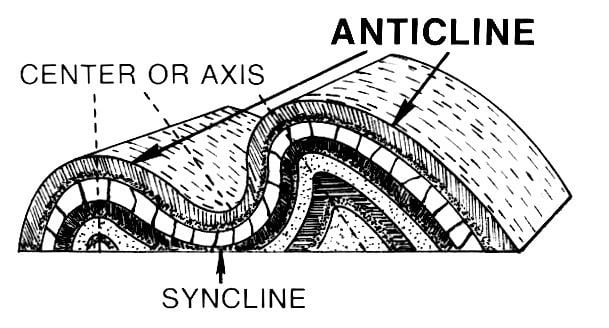 | ||
In structural geology, a syncline is a fold with younger layers closer to the center of the structure. A synclinorium (plural synclinoriums or synclinoria) is a large syncline with superimposed smaller folds. Synclines are typically a downward fold, termed a synformal syncline (i.e. a trough); but synclines that point upwards can be found when strata have been overturned and folded (an antiformal syncline).
Contents
Characteristics
On a geologic map, synclines are recognized as a sequence of rock layers that grow progressively younger, followed by the youngest layer at the fold's center or hinge, and by a reverse sequence of the same rock layers on the opposite side of the hinge. If the fold pattern is circular or elongate circular the structure is a basin. Folds typically form during crustal deformation as the result of compression that accompanies orogenic mountain building.
